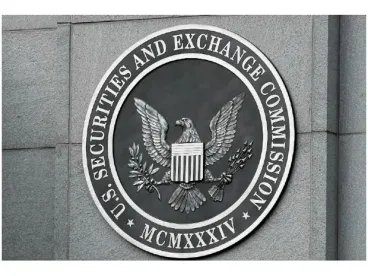The SEC’s Division of Corporation Finance (CorpFin) recently issued a statement1 announcing that, in light of the uncertainty regarding how the SEC will resolve certain significant issues with the conflict minerals rule, CorpFin has determined that it “will not recommend enforcement action to the [SEC] if companies, including those that are subject to paragraph (c) of Item 1.01 of Form SD, only file disclosure under the provisions of paragraphs (a) and (b) of Item 1.01 of Form SD.” CorpFin’s no-action position (No-Action Position) will benefit those issuers whose circumstances otherwise require them to file conflict minerals reports in accordance with the requirements of Item 1.01(c) of the SEC’s Form SD (Item 1.01(c)), but that rely on the No-Action Position to avoid filing conflict minerals reports containing disclosures subject to being read as implying that conflict minerals contained in products the issuers sell “have not been found to be ‘DRC conflict free.’” Unfortunately, CorpFin’s statement contains no specific guidance as to how issuers wanting to rely on the No-Action Position are expected to comply with the disclosure requirements of Items 1.01(a) and (b).
CorpFin’s statement was prompted by the U.S. District Court for the District of Columbia’s issuance of a final judgment in National Association of Manufacturers, et al. v. SEC, et al. (NAM)2 on April 3, 2017. The judgment set aside those provisions of the rule that the U.S. Court of Appeals for the District of Columbia Circuit (D.C. Circuit) had previously invalidated in NAM,3 and remanded the matter to the SEC for further action. The D.C. Circuit’s holding invalidated provisions of Item 1.01(c) requiring an issuer to make disclosure as to any product it manufactured or contracted to have manufactured containing any conflict mineral necessary to the functionality or production (Necessary Conflict Mineral) of that product (Conflict Product) and that had “not been found to be ‘DRC conflict free.’”4
On the day CorpFin issued its statement, the SEC’s Acting Chairman, Michael S. Piwowar, issued a statement in which he noted that until certain issues with the rule are resolved by the SEC, “it is difficult to conceive of a circumstance that would counsel in favor of enforcing Item 1.01(c) of Form SD.”5
CorpFin’s and Acting Chairman Piwowar’s statements raise questions regarding how issuers are to comply with the rule in advance of the May 31, 2017 deadline for the filing of reports on Form SD for the rule’s reporting year ended December 31, 2016 (2016 reporting year).
Putting the CorpFin Statement in Context
To put the No-Action Position in context, it is helpful to revisit some pertinent requirements of Item 1.01(a) – (c) of Form SD, the rule’s substantive provisions. Item 1.01(a) requires an issuer with any Conflict Product to conduct in good faith a reasonable country of origin inquiry (RCOI) to determine whether each Necessary Conflict Mineral contained in the issuer’s Conflict Products originated in one of the Democratic Republic of the Congo and its adjoining countries (Covered Countries) or is from recycled or scrap sources.
Under Item 1.01(b) of Form SD (Item 1.01(b)), an issuer that, based on an RCOI, (1) concludes that the Necessary Conflict Minerals in its Conflict Products did not originate in a Covered Country or did come from recycled or scrap sources, (2) has no reason to believe that such Necessary Conflict Minerals originated in a Covered Country, or (3) reasonably believes such Necessary Conflict Minerals did come from recycled or scrap resources must disclose its determination in such regard and briefly describe its RCOI and its RCOI’s results in a report on Form SD filed with the SEC.6
Under Item 1.01(c), an issuer with a Conflict Product containing a Necessary Conflict Mineral that the issuer knows, based on its RCOI, originated in a Covered Country and is not from recycled or scrap sources or has reason to believe may have originated in a Covered Country and may not be from recycled or scrap sources must exercise due diligence on the source and chain of custody of that Necessary Conflict Mineral in the manner required by Item 1.01(c). If, after the exercise of such due diligence, the issuer determines that all of its Necessary Conflict Minerals originated outside the Covered Countries or did come from recycled or scrap sources (Non-Conflict Minerals), the issuer must file a report on Form SD disclosing its determinations made based on its RCOI and due diligence and describing the RCOI and due diligence and their results. Such issuers need not file a conflict minerals report (CMR) as an exhibit to their Form SD.
Item 1.01(c) further requires an issuer that, after conducting an RCOI and exercising due diligence, cannot determine that all of the Necessary Conflict Minerals in its Conflict Products are Non-Conflict Minerals to file a report on Form SD with a CMR as an exhibit to that report. The CMR must disclose, among other information, the issuer’s due diligence efforts, each of its Conflict Products that has not been found to be “DRC conflict free”7 (a disclosure requirement invalidated by the D.C. Circuit’s holding in NAM) and the country of origin of the Necessary Conflict Minerals in such Conflict Product.
Effect of the CorpFin Statement on Compliance
Issuers not subject to the provisions of Item 1.01(c) of Form SD. Issuers that must comply with the rule, but, based only on RCOIs, make determinations regarding their Necessary Conflict Minerals that allow them to only make disclosure in a report on Form SD in accordance with Item 1.01(b)’s requirements are not subject to Item 1.01(c)’s disclosure, due diligence, or other requirements, and, thus, do not need or benefit from the No-Action Position’s relief.
Issuers subject to the provisions of Item 1.01(c) of Form SD. The No-Action Position allows all of those issuers that must comply with any of Item 1.01(c)’s requirements (Item 1.01(c) issuers) to comply with the disclosure requirements of the rule by disclosing in a report on Form SD their determinations regarding the origin and source of their Necessary Conflict Minerals based on the RCOIs they perform and the nature and results of those RCOIs. It also allows those Item 1.01(c) issuers otherwise required by Item 1.01(c)’s express requirements to file a CMR as an exhibit to their Form SD to comply with the rule’s disclosure requirements by filing with the SEC a report on Form SD containing the disclosure described above without including a CMR as an exhibit to their Form SD. The No-Action Position does not relieve any Item 1.01(c) issuer—at least expressly—from the diligence requirements of Item 1.01(c) or any other requirement not involving disclosure.8
At this late date in the compliance cycle for the 2016 reporting year, Item 1.01(c) issuers should have already exercised due diligence regarding the Necessary Conflict Minerals in their Conflict Products manufactured in the 2016 reporting year. Consequently, an Item 1.01(c) issuer deciding to rely on the No-Action Position must decide if it will disclose in its report on Form SD for the 2016 reporting year, the determinations it made regarding the origin or source of its Necessary Conflict Minerals based on its due diligence as well as based on its RCOI and the nature of its due diligence and the results of that due diligence as well as the nature and results of its RCOI.9
CorpFin’s expectations in this regard are unclear. While the No-Action Position could be construed as excusing all Item 1.01(c) issuers from all reporting under Items 1.01(a) and (b),10 we think it more likely that CorpFin intends the No-Action Position to be available to Item 1.01(c) issuers that file a report on Form SD containing disclosures complying with the provisions of Items 1.01(a) and (b) as if such provisions were specifically made applicable to those issuers. Thus, we believe that, unless the SEC provides guidance to the contrary, it is prudent for Item 1.01(c) issuers relying on the No-Action Position to disclose in their reports on Form SD for the 2016 reporting year, the (1) determinations regarding the origin and source of their Necessary Conflict Minerals they make based on their RCOIs and due diligence and (2) describe briefly their RCOIs and due diligence process and the results of such RCOIs and due diligence.
Without additional SEC guidance on compliance with the rule, Item 1.01(c) issuers still face, at least with respect to their compliance efforts as to the rule’s reporting year ending December 31, 2017, the question of whether the No-Action Position is intended to relieve them from all of Item 1.01(c)’s requirements, not just Item 1.01(c)’s disclosure requirements. Acting Chairman Piwowar’s statement suggests that, at least in the near term, the SEC is unlikely to take any action against an issuer not exercising due diligence under Item 1.01(c)’s diligence requirement. Nevertheless, without further SEC guidance on the issue, the more conservative course of action for Item 1.01(c) issuers to take will be to continue to exercise due diligence in accordance with Item 1.01(c)’s requirements.
Practical Considerations
Carefully consider disclosures in light of No-Action Position. The No-Action Position is unlikely to afford Item 1.01(c) issuers with any significant reduction in the compliance burden under the rule as to the 2016 reporting year. However, an Item 1.01(c) issuer that would otherwise be required to file a CMR with its Form SD for the 2016 reporting year could reduce its exposure to liability for any material misstatement or omission from disclosure that would be have to be made in a CMR, but not in a report on Form SD complying only with Item 1.01(b), by relying on the No-Action Position and filing only such a report on Form SD with the SEC. More importantly, an Item 1.01(c) issuer choosing to rely on the No-Action Position to not file a CMR should be able to craft the disclosures in its report on Form SD in a manner that does not expressly state or imply in any way that any of its Conflict Products have “not been found to be ‘DRC conflict free,’” which is the type of disclosure required by those portions of the rule that the D.C. Circuit has invalidated. At the same time, issuers relying on the No-Action Position should be careful not to include in a report on Form SD any disclosure characterizing any Conflict Product as being, or implying any Conflict Product is, “DRC conflict free.” The SEC is likely to view a report on Form SD including such disclosure as being subject to an independent private sector audit as the rule requires be conducted as to CMRs containing such disclosure and as being inconsistent with the No-Action Position.
When determining whether to rely on the No-Action Position, Item 1.01(c) issuers should consider the potential reactions that any changes to their disclosure practices under the rule may evoke from shareholders, activists, customers and NGOs that have taken an interest in disclosures under the rule. Such reactions could include a shareholder lawsuit claiming—notwithstanding the No-Action Position—that the issuer omitted more disclosure than was determined to be unconstitutional by the D.C. Circuit.
1. SEC Div. of Corp. Fin., Updated Statement on the Effect of the Court of Appeals Decision on the Conflict Minerals Rule (Apr. 7, 2017), available at https://www.sec.gov/news/public-statement/corpfin-updated-statement-court-decision-conflict-minerals-rule. CorpFin’s statement updates the April 29, 2014 statement of Keith F. Higgins, the then-current Director of CorpFin. See Keith F. Higgins, Director, SEC Div. of Corp. Fin., Statement on the Effect of the Recent Court of Appeals Decision on the Conflict Minerals Rule (Apr. 29, 2014), available at https://www.sec.gov/News/PublicStmt/Detail/PublicStmt/1370541681994. See our discussion of Corp Fin’s 2014 statement here.
2. Case 1:13-cv-00635-KBJ (D. D.C Apr. 3, 2017).
3. 800 F.3d 518 (D.C. Cir. 2015). See our discussion of this holding here.
4. Id. at 530.
5. Acting Chairman Michael S. Piwowar, Statement of Acting Chairman Piwowar on the Court of Appeals Decision on the Conflict Minerals Rule (Apr. 7, 2017), available at https://www.sec.gov/news/public-statement/piwowar-statement-court-decision-conflict-minerals-rule. This statement follows his statement of January 31, 2017 in which he announced that he had directed SEC staff to consider whether existing guidance regarding compliance with the rule was still appropriate and if additional relief was needed. See Acting Chairman Michael S. Piwowar, Reconsideration of Conflict Minerals Rule Implementation (Jan. 31, 2017), available at https://www.sec.gov/news/statement/reconsideration-of-conflict-minerals-rule-implementation.html.
6. The information in an issuer’s report on Form SD, including in any conflict minerals report filed as an exhibit to the Form SD, must also be posted on the issuer’s publicly available website.
7. Conflict Products are “DRC conflict free” if they do not contain a Necessary Conflict Mineral that directly or indirectly finances or benefits certain armed groups in a Covered Country.
8. As noted above, Acting Chairman Piwowar’s statement may suggest that he sees the legal viability of the diligence requirements of Item 1.01(c) to also be questionable in light of NAM.
9. Many, if not most, Item 1.01(c) issuers see their RCOIs and due diligence regarding the origin and source of their Necessary Conflict Minerals converging, if not being the same efforts or process. For such Item 1.01(c) issuers, this question may be largely one of how they will label the particular efforts they make to ascertain the origin or source of their Necessary Conflict Minerals.
10. By its terms, CorpFin’s statement of the No-Action Position seems to allow all persons potentially subject to the conflict minerals rule—including entities subject to the requirements of Item 1.01(c)—to comply with the rule if they “only file disclosure under the provisions of paragraphs (a) and (b) of Item 1.01 of Form SD.” This particular statement creates some ambiguity as to CorpFin’s intent for how Item 1.01(c) issuers will comply with the provisions of paragraphs (a) and (b) of Item 1.01 because paragraphs (a) and (b) by their terms only impose reporting obligations on issuers that determine that their Necessary Conflict Minerals all meet the requirements of Item 1.01(b) based solely on their conduct of an RCOI.





 />i
/>i
